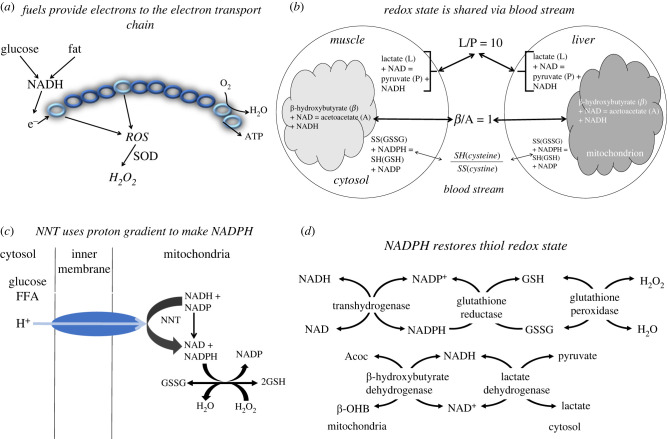Figure 1.
Redox communication system. (a) Fuels generate NADH that donates electrons to the electron transport chain generating a proton gradient that drives ATP synthesis via ATP (complex V). Excess NADH, more than needed to maintain ATP levels, generates ROS. Most ROS is converted to H2O2 by superoxide dismutase (SOD). (b) Redox state information is shared among all tissues via circulating metabolites. Metabolites that are readily transported into and out of cells reflect the redox state in their compartment of origin. Thus, the lactate to pyruvate ratio (L/P) reflects the cytosolic NADH/NAD ratio, mainly influenced by muscle; the ß-hydroxybutyrate to acetoacetate ratio (ß/A) reflects the mitochondrial redox state, mainly influenced by liver; the cysteine to cystine ratio (SH/SS) reflects the intracellular thiol ratio, mainly influenced by reactive oxygen species (ROS) production. (c) Nicotinamide nucleotide transhydrogenase (NNT), like ATP synthase, uses the proton gradient to convert NADH to NADPH. NADPH, in turn maintains the thiols in the reduced state needed to convert H2O2 to H2O. (d) NADPH is required to return oxidized glutathione (GSSG) to the reduced state (GSH) after glutathione peroxidase detoxifies H2O2 to H2O. NADH is restored by fuels that generates pyruvate, lactate, acetoacetate (Acoc), ß-hydroxybutyrate (ß-OHB). (Online version in colour.)

